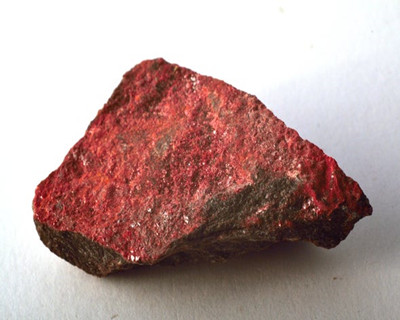(单词翻译:单击)
听力文本
This is Scientific American — 60-Second Science. I'm Karen Hopkin.
Casanova. The name is synonymous with a reputation for romantic—let's say excess. But a new study suggests that the real Giacomo Casanova may have exaggerated his sexual exploits—not in terms of their sheer volume, but in their infectious aftermath. Because though Casanova claimed to have suffered several bouts of gonorrhea, researchers could find no trace of the responsible microbe on the pages of the womanizer's handwritten memoir. The findings will appear in the journal Electrophoresis.
Casanova's memoir, completed in 1798, fills 12 volumes, and its English translation runs to 3,500 pages. In this tell-all, Casanova tallies some 122 lovers and confesses to recurring gonorrheal relapses.
To investigate these claims, researchers turned to a technique they had previously used to positively identify the bacterium that causes plague on the pages of death registries from 17th century Milan.
"Thus we thought we would be able to detect the gonococcus on Casanova's pages, since he candidly admitted, in his memoirs, having been infected by gonorrhea in his first sex intercourse at the age of 18 and having suffered from relapses of this sex pathology along his lifetime as a gallant lover."
Pier Giorgio Righetti, professor emeritus at Milan Polytechnic.

Righetti and his colleague Gleb Zilberstein, who heads a company called Spectrophon in Israel, developed a handheld device that allows them to capture and characterize protein fragments and other macromolecules from the surface of historical documents. Such biological materials can get stuck to a manuscript when, say, someone licks his fingers to more easily turn the book's pages, leaving behind traces of potentially infected saliva.
But in the case of Casanova, "as luck goes, no traces of gonococcus could be detected."
They did, however, find traces of cinnabar, a red pigment containing mercury sulfide. At the time, that chemical was used to treat the sexually transmitted diseases du jour, including syphilis and gonorrhea.
"It is thus quite likely that Casanova had been using mercury sulfide to cure a relapse of his pathology."
So it could be that his infection was in remission when Casanova penned the three or four pages of Chapters 1 and 2 that the researchers were able to examine—and that in addition to his way with women, Casanova also had a deft hand with 18th century pharmaceuticals.
Thanks for listening for Scientific American — 60-Second Science. I'm Karen Hopkin.
参考译文
这里是科学美国人——60秒科学。我是凯伦·霍普金。
卡萨诺瓦。这个名字是浪漫的代名词——也可以说是放荡。但一项新研究表明,真正的卡萨诺瓦可能夸大了他的性功绩——不是指庞大的人数,而是传染性后果。因为尽管卡萨诺瓦声称遭受了数次淋病发作的痛苦,但在这位花花公子的手写回忆录纸页上,研究人员却并未发现任何致病细菌的痕迹。这项研究结果发表在《电泳》期刊上。
卡萨诺瓦的回忆录完成于1798年,共12卷,英文译本多达3500页。在这本坦白的回忆录中,卡萨诺瓦回顾了约122名恋人,并承认淋病多次复发。
为了调查这些说法,研究人员求助于他们此前使用过的一项技术,他们曾用该技术在17世纪死亡登记簿纸页上准确辨别出导致瘟疫的细菌。
“因此,我们本以为能在卡萨诺瓦的纸页上发现淋球菌,因为他在回忆录中坦承,他在18岁首次性行为中感染了淋病,而且作为一名殷勤的情人,他一生都饱受这种性病反复发作的痛苦。”
米兰理工学院的名誉教授皮尔·乔吉奥·里盖蒂说到。
里盖蒂和他的同事、以色列公司Spectrophon的负责人格列布·齐伯斯坦研发了一种便携设备,可以从历史文件表面捕获和描述蛋白质片段和其它大分子。举例来说,当某人为了更方便翻书页而舔手指时,会留下可能受到感染的唾液痕迹,这种生物材料就会粘在手稿上。
但在卡萨诺瓦案例中,“幸运的是,并没有发现可能检测出来的淋球菌痕迹。”
然而,他们发现了朱砂的痕迹,朱砂是一种含有硫化汞的红色颜料。当时,这种化学物质被用于治疗梅毒和淋病等流行的性传播疾病。
“因此,卡萨诺瓦很可能一直用硫化汞来治疗他反复发作的病症。”
因此,当卡萨诺瓦书写研究人员能够检查的第一章和第二章的三四页时,他的传染病可能正在缓解——除了他对待女性的方式外,卡萨诺瓦对18世纪药物的运用也很在行。
谢谢大家收听科学美国人——60秒科学。我是凯伦·霍普金。
译文为可可英语翻译,未经授权请勿转载!
重点讲解
重点讲解:
1. confess to sth./doing sth. 承认,供认,坦白(自己做错的事);
He confessed to having been a bundle of nerves.
他承认自己一直神经极度紧张。
2. turn to 求助于;求教于;
For assistance, they turned to one of the city's most innovative museums.
他们求助于该市最具创新风格的一家博物馆。
3. suffer from (因疾病或处于其他不利境地而)受苦,受难,受折磨;
He was eventually diagnosed as suffering from terminal cancer.
他最终被诊断出患了晚期癌症。
4. in remission (疾病的)减轻,缓和;
Brain scans have confirmed that the disease is in remission.
脑部扫描已经证实疾病得到了控制。


